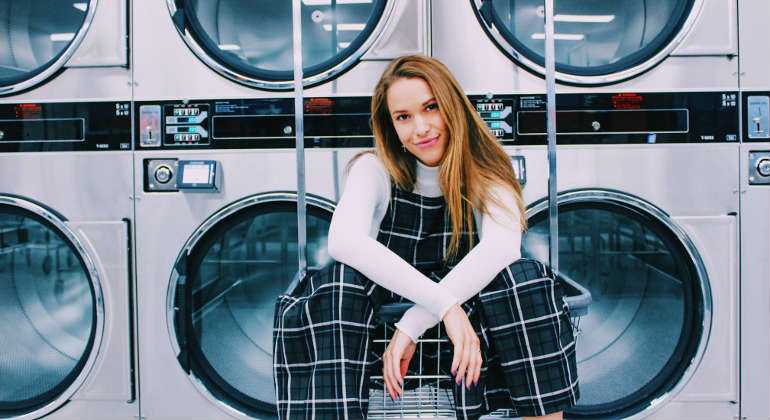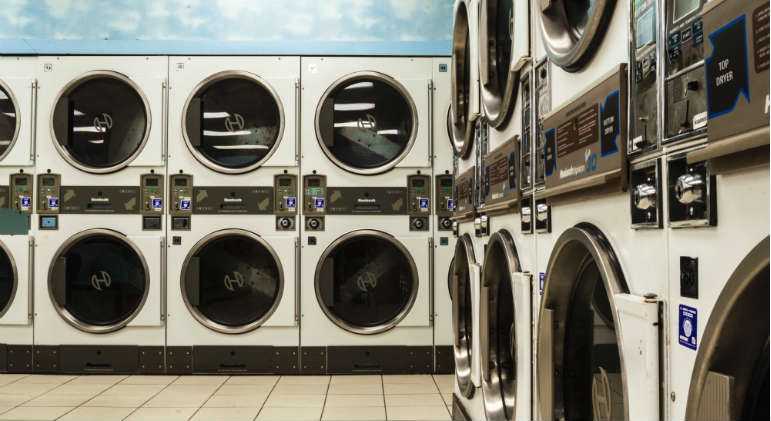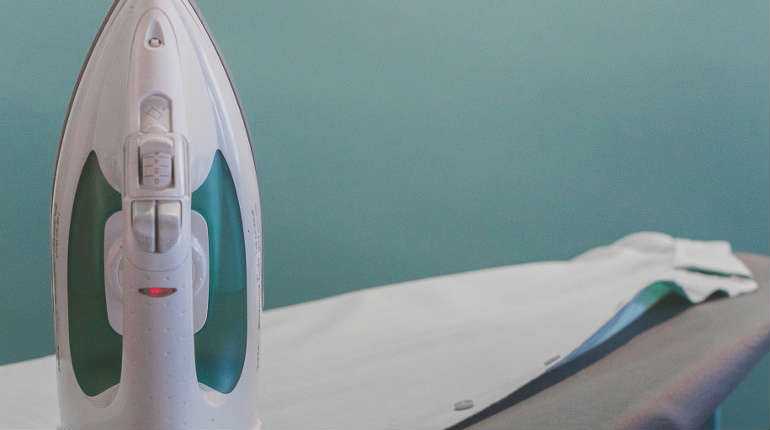How to Wash a Weighted Blanket?

Weighted blankets have amazing benefits, improving the overall quality of life for millions of consumers all over the country. Using Deep Touch Pressure, these specially designed blankets, weighing anywhere from 5 to 50 pounds, can help with autism, ADHD, depression, and insomnia. Weighted blankets often come with a hefty price tag and, for most Americans, the price of a weighted blanket is justified as a health investment. An item that is not only expensive, but also an invaluable health asset, should be washed, cleaned and treated with appropriate care.
| Recommended Weighted Blankets | Our Rating | ||
|---|---|---|---|
| Baloo Weighted Blanket | Best Overall | Check price | |
| LUXOME Weighted Blanket | Best Premium | Check price | |
| BABO Cooling Weighted Blanket | Best Cooling | Check price | |
| Gravity Blankets | TIME Magazine’s Best Inventions of 2018 | Check price |
Since most weighted blankets are used on a regular basis, if not every night, it is inevitable that it will need to be cleaned periodically.
Generally, weighted blankets that are covered with a duvet or are used on top of a sheet should be washed about four times a year. Of course, if it is used directly on the body, it will need to be washed more frequently.
Because weighted blankets are designed differently than typical blankets, they require special care. These blankets are comprised of several dozen pockets filled with special weighted items.
These fillers can include plastic poly-pellets, glass beads, or even rice.
The type of filler used to weight the blanket will also determine the way it should be cleaned. These blankets can also be made from a variety of fabrics, including fleece, flannel, or polyester.
To preserve the quality of the fabric and extend the life of the blanket, utmost care should be taken when laundering weighted blankets.
How to Wash a Weighted Blanket?
First and foremost, when washing a weighted blanket in a washing machine, make sure to wash it alone in cool water.
If a washing machine can typically hold a queen of king-sized comforter, it can accommodate a weighted blanket that is less than 20 pounds.
Sometimes, washing machines at a laundromat are larger than household washing machines and are more conducive to cleaning such heavy blankets.
Generally, if a blanket is more than 25 pounds, it is too heavy to wash in a regular household washing machine.
Second, be sure to use a gentle laundry detergent free of bleach or fabric softener. Steer clear of any detergents advertised as “tough.” Seek out gentle, dye-free detergent or consider making an all natural detergent at home.
Third, take special care when drying a weighted blanket as exlained in a separate article. In short, and for best results, either tumble dry the freshly laundered blanket or air dry it naturally. Many weighted blankets are designed to withstand low to moderate dryer heat without melting.
However, hang-drying the blanket will extend the life of the fabric, as well as the filler.
When to Visit the Laundromat

As we mentioned before, if a blanket is over 20-25 pounds, it is not recommended that they be washed in a household washing machine.
For these particularly heavy blankets, we recommend visiting a local laundromat, which probably has large, commercial-sized washing machines available for use.
For consumers who do not live near a laundromat or cannot easily access one on a regular basis, consider using a duvet cover for the weighted blanket.
A duvet makes washing and drying much easier: simply remove the duvet cover and toss it in the washing machine, following the manufacturer’s instructions on the tag.
Even with a duvet cover, the weighted blanket itself will need to be cleaned periodically. Try airing it out outside on a sunny day where the fresh air and UV rays can naturally clean the blanket.
Sometimes, it will need to be washed, especially if there has been a spill or if bodily fluids have made contact with the weighted blanket.
In that case, follow the directions listed above regarding the 25 pound household washing machine weight limit and make note of when to visit a laundromat.
Things to Avoid
As we mentioned previously, only use gentle laundry detergent that does not contain bleach or fabric softener. Depending on the fabric, some fabric softeners can build up in the materials of a weighted blanket, causing it to feel scratchy or stiff.
This is certainly not the desired result of fabric softeners.
As for bleach, chlorine, even if it is diluted, will cause the fibers in fabric to break down. Washing a weighted blanket in a diluted bleach will shorten the lifespan of the blanket, causing it to wear out faster.
Fabric softener and bleach can also adversely affect the fillers in a weighted blanket, causing them to break down or clump together.
Just be mindful that weighted blankets are unique and, as such, require unique washing.
Is it Okay to Iron a Weighted Blanket?

No, better avoid ironing a weighted blanket. Some consumers who iron sheets or other bedding and prefer to keep things looking neat and wrinkle-free may be tempted to iron a weighted blanket.
Resist this temptation! Even if the fabric itself is iron-safe, the filler probably is not.
Most certainly, fillers will be melted and ruined if iron heat is applied to them. Glass beads may not be damaged, but a weighted blanket would be very difficult to maneuver on an ironing board, even if the fabric is iron-safe.
For a duvet, ironing may be permissible, depending on its material. Cotton blends can be ironed, but not polyester, minky, or fleece.
As for washing a duvet, it is best to follow instructions listed by the manufacturer.
It still may be a good idea to avoid too much fabric softener or bleach, as it can cause the blanket to wear out faster.
Special Fabric Considerations
We have compiled a list of the most common fabrics used in the making of weighted blankets, along with a set of instructions for how best to care for weighted blankets that are made of those materials.
Cotton
As one of the most common fabrics in the world, cotton is simple to care for. They are great for all-season and cooling weighted blankets.
Wash cotton blankets separately in cold water.
It is always recommended that weighted blankets be washed in a load by themselves. Having too many cotton items in the washing machine can agitate the fabric, causing it to wear out faster.
Use gentle, chlorine-free detergent with ½ cup of vinegar to preserve the color of the blanket. As always, skep the fabric softener.
Flannel
Flannel is a popular weighted blanket choice of fabric, especially for the sensory-sensitive.
Flannel can be washed in cold or warm water, but do not wash with hot water as it will cause flannel to wear out more quickly. Tumble dry in a household washing machine on low heat.
Try not to leave it in the dryer so long that it cools.
Remove it from the dryer immediately after the cycle has ended because leaving the weighted blanket in a heated environment for too long will overdry the fibers into the fabric, decreasing their life span.
Dryer sheets can be used in the dryer with a flannel weighted blanket.
Flannel blankets can also dry naturally quite quickly if the excess water has been removed by a ringer.
Fleece
Fleece blankets can be washed separately in warm water. To remove stains from fleece blankets, try soaking the blanket in the washing machine for 45 minutes before starting the wash cycle.
Use a mild detergent, but fleece can tolerate fabric softener. To reduce fabric softener build-up, which can cause fabric to become scratchy or rough, give the fleece an extra rinse before starting the spin cycle.
Fleece can be dried in the dryer on low heat, but consider air drying fleece to reduce pilling.
Minky
Some of the best-selling weighted blankets are made with minky fabric. This is a great fabric for weighted blankets, as it is durable, washes well, and easily maintains its soft texture.
Wash minky fabrics with a non-chlorine bleach diluted in the water. Sometimes, there may be a spot stain on a large blanket that is difficult to wash. If this is the case, try scrubbing the stain from the minky fabric, with a toothbrush and a drop of gentle detergent.
Avoid hot water and high heat settings of the dryer because minky is a polyester blend that cannot tolerate heat.
Rayon-Linen Blends
Rayon-Linen fabric is a durable, medium weight material that is commonly selected in the making of weighted blankets. Rayon-linen is made from wood that has been pulp-treated with chemicals and is considered a semisynthetic fabric.
Sometimes its color can bleed or the fabric can shrink when laundered, so it is usually a dry-clean only fabric. However, some minky fabrics can be put in the washing machine or dryer.
Be sure to check the label for the manufacturer’s instructions. Wash separately in cold water and air dry only.
How to Clean a Weighted Blanket with Specific Stains?
Accidents happen. It is inevitable that at some point, something will come into contact with a weighted blanket unintentionally, resulting in an unwanted stain. We have compiled a list of some of the most-common stains with instructions on how to remove them below.
Removing Red Wine Stains from a Weighted Blanket
To remove red wine stains from fabric, apply one to two ounces of distilled white vinegar to the stain and let it set for 5 to 10 minutes. Blot the stain with a wet towel, then a dry towel.
If the vinegar does not help dissipate the stain, use an enzyme stain remover. Apply the stain remover to the stain, wait 30 minutes then blot with a wet towel.
Once the stain begins to dissipate, wash the blanket in cold water. Do not dry it because heat will set in any remaining stain.
Removing Urine Stains
Urine is highly acidic, which means set-in stains can be tricky. For a stain that is still wet, soap and water should take care of the stain and pungent smell.
For stains that have dried, an enzyme laundry stain remover will need to be added to the stain or diluted into the washing water. If a urine smell still permeates the fabric after its first washing, wash the blanket a second time before drying.
FAQs
How to Wash a Weighted Blanket by Hand?
When your blanket weights 20 lbs or more, it is not recommended to use a household washing machine. Either go and use a commercial machine or hand wash it at home. To wash a weighted blanket by hand, follow these steps:
- Fill a tub or large basin with lukewarm water and a mild laundry detergent. Avoid using hot water, as it can shrink or damage the blanket.
- Submerge the weighted blanket in the water and gently agitate it to loosen any dirt or stains. Avoid wringing or twisting the blanket, as this can damage the filling.
- Rinse the blanket thoroughly with clean water to remove all soap residue.
- Press the blanket gently to remove excess water, then roll it in a clean, dry towel to absorb more moisture.
- Lay the blanket flat on a clean, dry surface to air dry. Avoid hanging the blanket to dry, as this can cause the filling to shift or the blanket to stretch.
- Allow the blanket to dry completely before folding or storing it. This may take several hours or even a full day, depending on the humidity and temperature of your location.
Note: If your weighted blanket is particularly dirty or has a strong smell, you may need to repeat the above hand wash steps or use a stronger detergent solution. It’s also a good idea to spot clean any stains before washing the entire blanket. As always, be sure to check the care and washing instructions on the blanket’s label before attempting to wash it by hand.
How Often Should You Wash a Weighted Blanket?
The frequency of washing a weighted blanket will depend on a few factors, including how dirty it gets, how often it’s used, and personal preference. Here are some general guidelines for how often to wash a weighted blanket:
- If you use your weighted blanket every day, it’s generally recommended to wash it every 1-2 months. This will help to remove any dirt, sweat, and oils that may accumulate on the blanket over time.
- If you use your weighted blanket less frequently, you may be able to stretch the washing intervals to every 3-6 months.
- If you have allergies or sensitivities, or if you use the blanket in a particularly dusty or polluted environment, you may want to wash it more frequently to reduce the risk of irritation or allergies.
- Having a removable cover for your weighted blanket, you can wash the cover more frequently to extend the time between washing the entire blanket.
Remember to always check the care instructions on the blanket’s label before washing it. Some blankets may have specific washing or drying guidelines that you need to follow in order to maintain their quality and durability.
How to Wash a Weighted Blanket with Glass Beads?
Weighted blankets with glass beads are very popular, as these fillings are not only virtually silent when you move around, but also less dense than plastic pellets. These types of beads retain less heat, making them an ideal choice for hot sleepers, plus, they are environmentally friendly.
Are you worried about damaging your weighted blanket with glass beads in the washing machine? No worries. Unlike plastic poly pellets which can become damaged at high temperatures, glass beads will remain intact and keep their shape even when washed on hot settings. So feel confident knowing that your weighty companion is safe to wash without affecting its quality or longevity.
Based on the above, a weighted blanket with glass beads can be washed as any other heavy sensory blanket. Other fabrics in the blanket may need special treatment or consideration though.
In summary, check the care label or manufacturer’s instructions, use cold water and a mild detergent, wash on a gentle cycle, avoid using fabric softeners or bleach, and dry according to the manufacturer’s instructions. Check the load maximum of the washing machine, as a rule of thumb, weighted blankets should not be washed in regular washing machines over 25 lbs.
Conclusion
Weighted blankets are uniquely designed and have unique washing requirements.
Remember, 25 pounds is the cut-off for blankets in a household washing machine. When in doubt as to whether a blanket is too large for a home washing, head to the laundromat.
The last thing a consumer wants is a big rip in an expensive weighted blanket!
Also, remember that duvets are a great way to protect a weighted blanket, as well as a much easier item to wash. When unsure of how to wash a duvet, refer to the manufacturer’s recommendations.
Use this guide to effectively clean and maintain a weighted blanket, always taking into consideration its fabric and filler to keep the blanket it the best shape possible.
